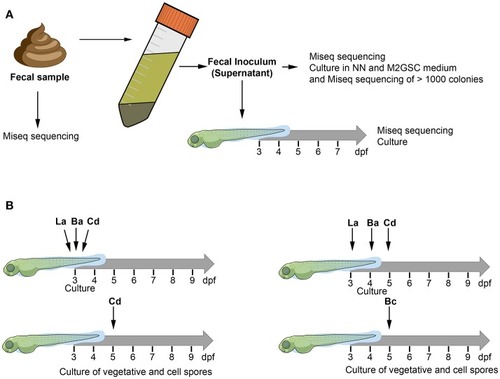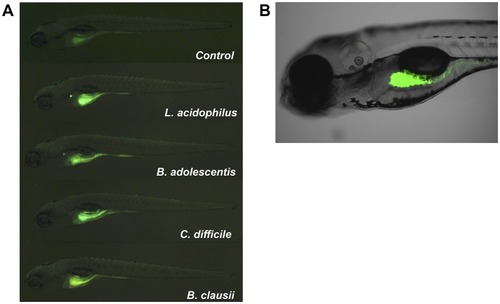- Title
-
Evaluating the Capacity of Human Gut Microorganisms to Colonize the Zebrafish Larvae (Danio rerio).
- Authors
- Valenzuela, M.J., Caruffo, M., Herrera, Y., Medina, D.A., Coronado, M., Feijóo, C.G., Muñoz, S., Garrido, D., Troncoso, M., Figueroa, G., Toro, M., Reyes-Jara, A., Magne, F., Navarrete, P.
- Source
- Full text @ Front Microbiol
|
The figure illustrates the two experimental approaches used to humanize the zebrafish larvae. The composition of bacterial microbiota was analyzed through culture and MiSeq sequencing |
|
Macroscopic and microscopic morphology of vegetative cells and endospores of |
|
Localization of fluorescent bacteria (DTAF) in 5 dpf zebrafish larvae. Observation of larvae in an PHENOTYPE:
|



